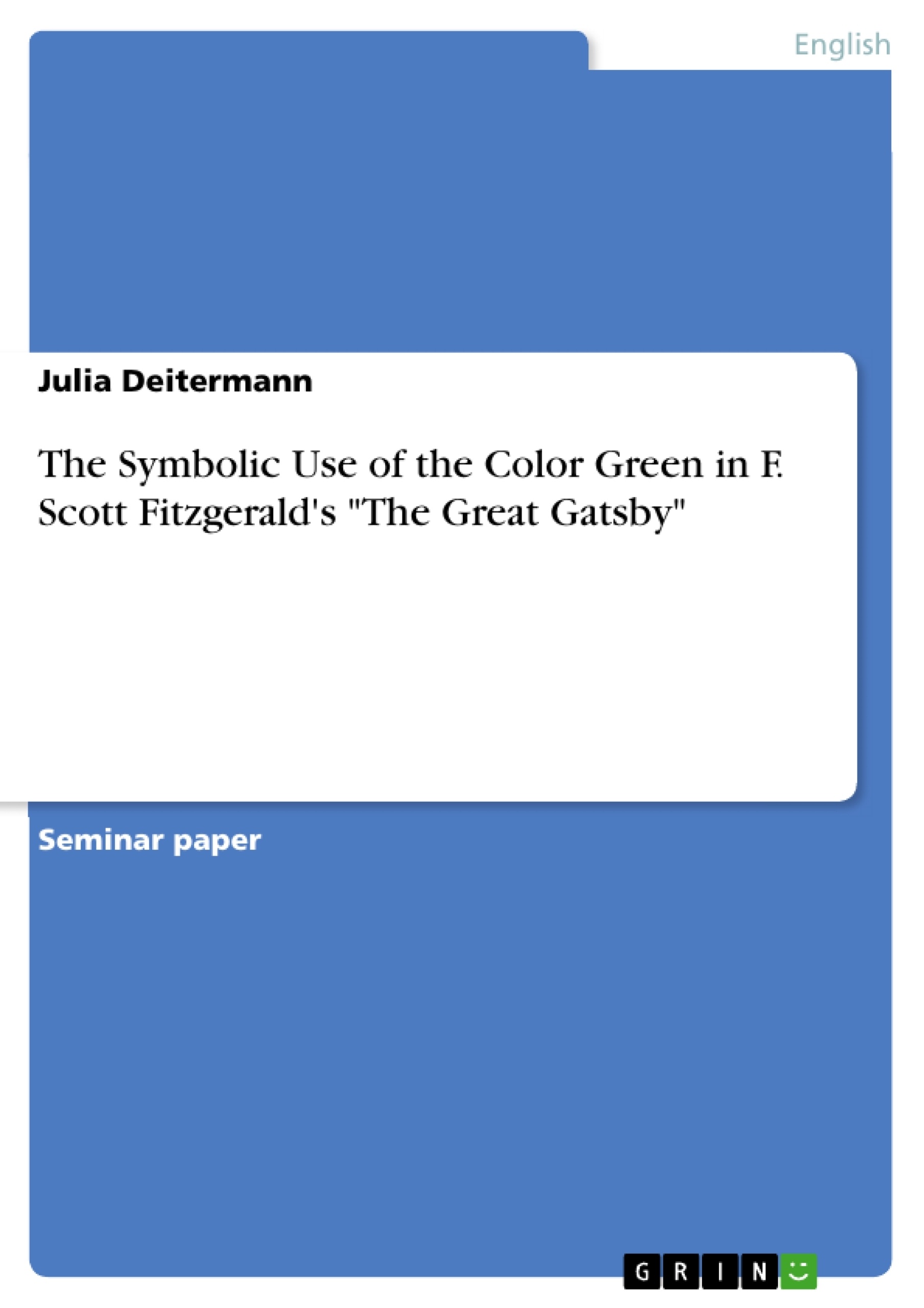F. Scott Fitzgerald’s masterpiece The Great Gatsby was written in a time of social decadence, in which values no longer played an important role among the newly rich and wannabe famous, whose life was about parties, money and affairs. On the surface, Fitzgerald’s story also seems to deal with success, wealth and love. Although the superficial life of the rich and powerful is a major theme inThe Great Gatsby,however, it mostly explores underlying complexities and personalities and in this way reveals the negative side of the American Dream to the reader. Corruption, despair and desperate desire come along with idealism, faith and illusions. The protagonist, Jay Gatsby, personifies the American Dream as he is a man with a dubious background who managed to accomplish a luxurious style of living and to achieve everything he wanted to have by his own efforts - except of his great love, that is Daisy.The Great Gatsby is built upon the desperate desires of the protagonist and reveals a glance behind the glittering facade of the rich. Fitzgerald manages to draw the reader’s attention to significant details and symbols in the text in order to make one think about socalled ‘truths’ and about the sham reality of a society that tries to keep up appearances. Consequently, symbols are an essential device of adding profundity to the text and of allowing the reader to gain insight into a character’s personality. The most significant symbolism applied in The Great Gatsby is color symbolism, green, white, gray, blue and yellow being the most prominent colors throughout the novel. In this paper, I will concentrate on analyzing Fitzgerald’s symbolic use of the color green based on the most significant examples and thus try to expose the meaning of its appliance in regard to society and the protagonists in the novel.
Table of Contents
- An Analysis of the Symbolic Use of the Color Green in F. Scott Fitzgerald's The Great Gatsby
- Introduction
- Green as a Symbol of Gatsby's Desire
- The Green Light as a Symbol of Unattainable Hope
- Gatsby's Denial of Reality
- The Green Light as a Symbol of Human Desire
- Conclusion
Objectives and Key Themes
This paper analyzes the symbolic use of the color green in F. Scott Fitzgerald's The Great Gatsby to explore the novel's themes of desire, unattainable dreams, and the complexities of the American Dream.
- The symbolic meaning of the color green in relation to Jay Gatsby's character and his pursuit of Daisy Buchanan
- The significance of the green light at the end of Daisy's dock as a symbol of Gatsby's unfulfilled desires and unattainable hope
- Gatsby's denial of reality and his desperate clinging to his idealized vision of Daisy
- The broader implications of the green light as a symbol of human desire and the elusive nature of dreams
- The role of the color green in highlighting the societal divide between "new money" and "old money" and the challenges faced by those who strive for acceptance within established social circles
Chapter Summaries
The paper begins by exploring the symbolic use of the color green in The Great Gatsby, focusing on its association with Gatsby's character and his longing for Daisy. The green light, which appears repeatedly throughout the novel, symbolizes Gatsby's unattainable hope for Daisy's love.
The paper then examines Gatsby's denial of reality and his desperate attempts to maintain his idealized vision of Daisy. The green light, despite its unattainability, serves as a symbol of Gatsby's refusal to accept the limitations of his dream.
Finally, the paper discusses the broader implications of the green light as a symbol of human desire and the elusive nature of dreams. The author argues that the green light represents the "orgastic future" that constantly recedes before us, highlighting the challenges of achieving fulfillment in a world where new desires emerge even after our goals are attained.
Keywords
The Great Gatsby, F. Scott Fitzgerald, green symbolism, American Dream, desire, unattainable hope, denial of reality, social class, new money, old money, symbolism, literary analysis, novel.
- Quote paper
- Julia Deitermann (Author), 2004, The Symbolic Use of the Color Green in F. Scott Fitzgerald's "The Great Gatsby", Munich, GRIN Verlag, https://www.grin.com/document/61101



